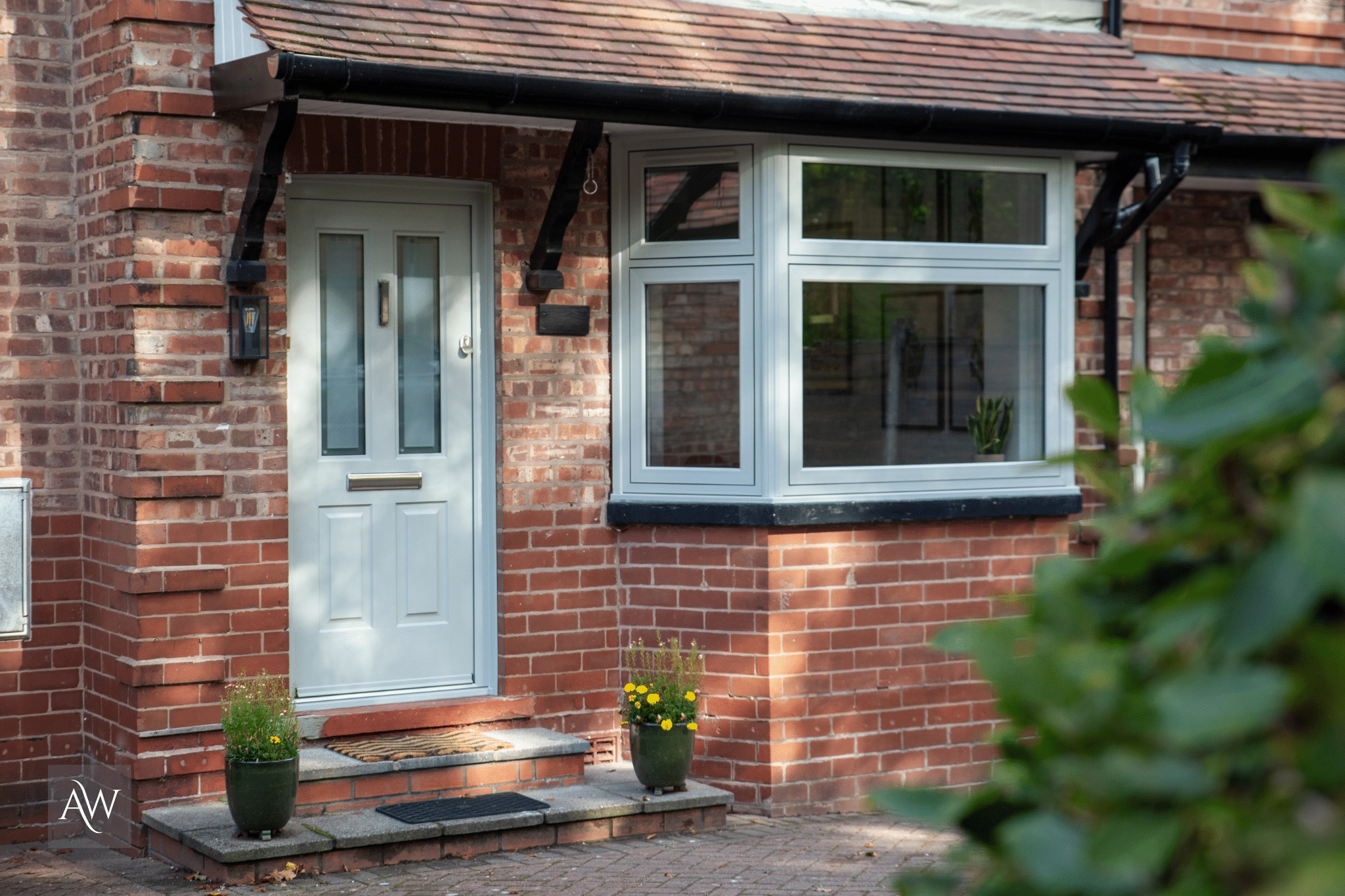
1920s Windows: A Guide for British Homes
When it comes to updating a 1920s or 1930s property, choosing the right windows can be an absolute game-changer. The windows you choose can enhance the overall aesthetic, helping to maintain the period charm that makes your home so special. Whether you own a terraced, semi-detached, or detached house, there are various window styles and materials available to complement your home’s style, while also introducing modern benefits like energy efficiency and low maintenance.
In this guide, we’ll explore the typical property styles of the 1920s, the importance of considering your home’s original materials, and how to choose the right type of window for your home. We’ll also introduce you to flush uPVC windows, a popular option for those looking for a traditional appearance without the upkeep, and how The Residence Collection, one of the finest heritage-inspired window ranges, might be just what your home needs.
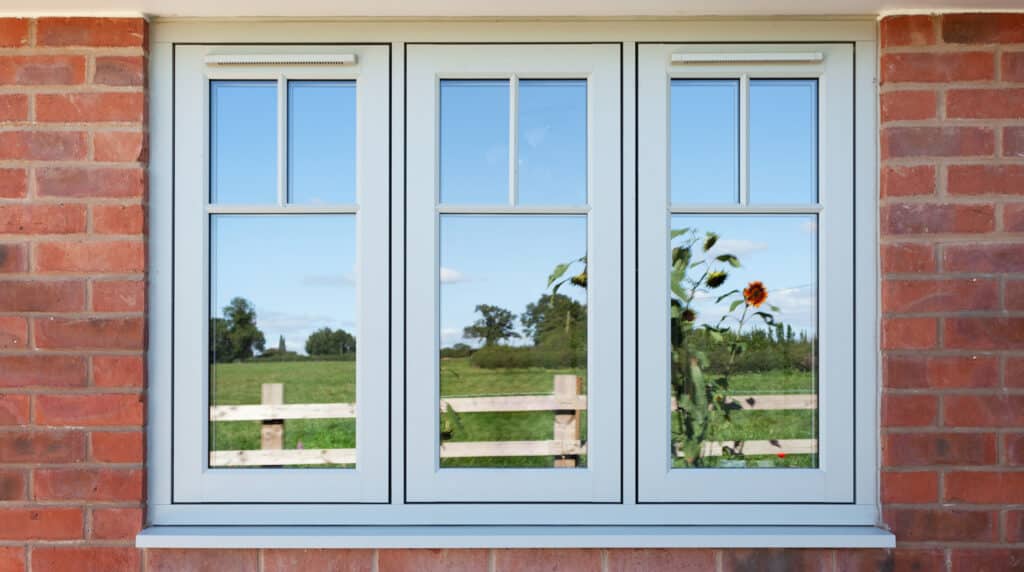
A Look at 1920s British Property Styles
The 1920s was a booming period for homebuilding across Britain, with a range of architectural styles that are still cherished today. Whether your home is a terraced, semi-detached, or detached property, windows play an essential role in maintaining that classic 1920s look.
Terraced homes: By the 1920s, terraced homes were still a popular choice, although their designs had evolved from the uniform rows of the Victorian era. These homes often feature intricate brickwork, and their windows, often flat, need to blend seamlessly with the brick design.
Semi-detached properties: Semi-detached homes of the 1920s are synonymous with charming bay or bow windows, which create a distinctive, grander look and allow plenty of light into the rooms.
Detached homes: For those who could afford it, detached properties offered the opportunity for unique design elements, often featuring large, flat windows or bay windows that made the façade look both open and sophisticated.
Regardless of which type of 1920s home you have, the right windows can enhance the property’s traditional charm while introducing modern conveniences.
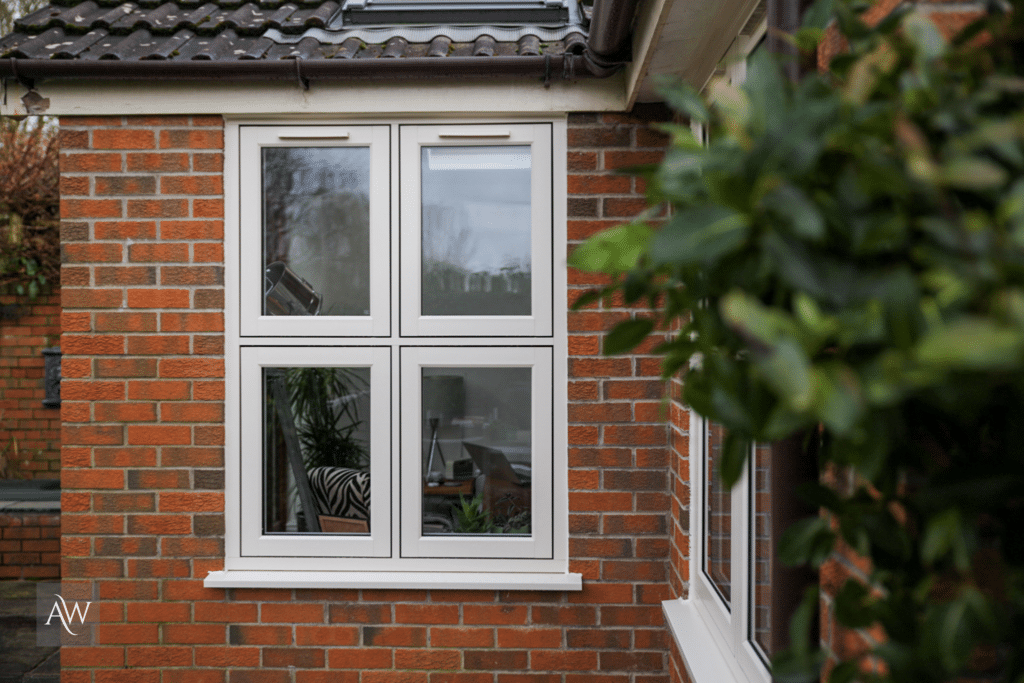
What’s Your Home Made Of?
Before diving into window styles, it’s essential to consider the original materials used in your home’s construction. This will help ensure that your new windows complement the existing features and create a cohesive look.
Red brick homes: Many homes built in the 1920s feature red brick, particularly semi-detached and terraced properties. Windows with slim, unobtrusive frames are ideal for showcasing the beauty of the brick, with colours like cream or white offering a striking contrast.
Part-rendered properties: Some homes from this period have sections of render alongside brick or stone. Windows in tones that complement the render, such as off-white or light grey, can bring the overall design together.
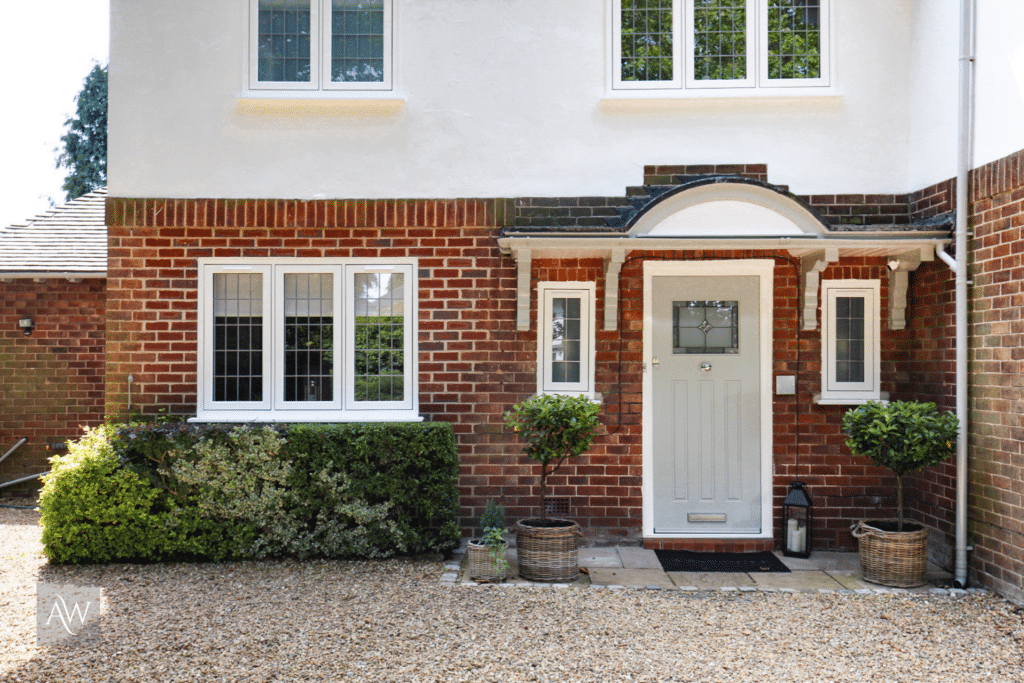
Tudor-revival homes: These properties, with their distinctive half-timbering, are best suited to timber-effect windows, which can maintain the original look while avoiding the maintenance issues of real wood.
Window Styles of the 1920s: Flat and Bay/Bow Windows
When updating the windows in a 1920s or 1930s property, the two most common window styles are flat windows and bay or bow windows.
Flat windows: These are typical in terraced homes or smaller properties. They provide clean, minimalist lines, which are perfect for allowing light in while keeping the exterior simple and elegant.
Bay and bow windows: These are synonymous with semi-detached and detached properties from the 1920s. Not only do they add elegance, but they also provide additional space and light inside the home. If you’re looking to replace or update your bay or bow windows, it’s important to select frames that preserve their grand look while offering durability.
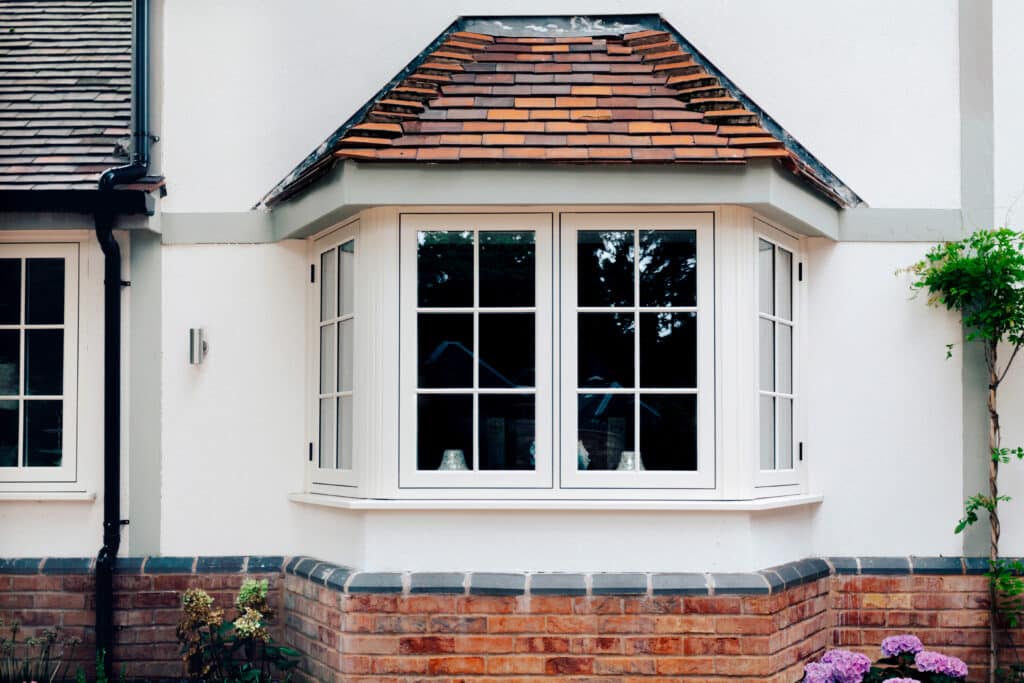
Choosing the Right Materials: uPVC vs Aluminium
The material you choose for your windows is just as important as the style. Traditional timber windows may seem like the obvious choice for period properties, but they can be a headache to maintain, with endless sanding, painting, and repairs. Fortunately, modern alternatives like uPVC and aluminium offer traditional aesthetics with the benefits of durability and energy efficiency.
Flush uPVC Windows
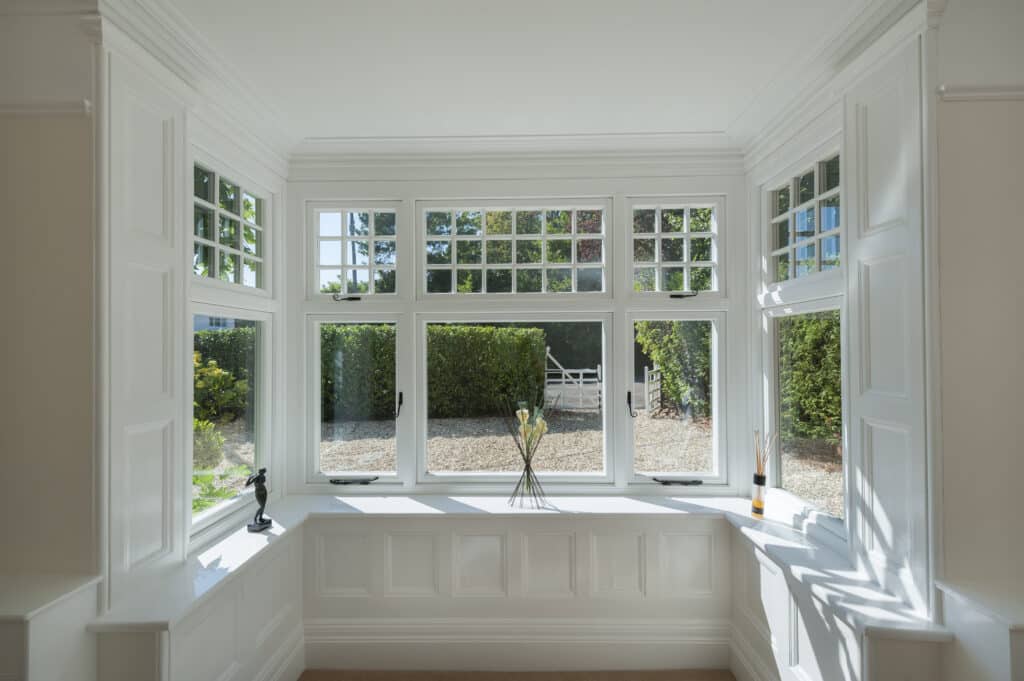
One of the most popular modern options for 1920s and 1930s homes is flush uPVC windows. Our flush uPVC windows are designed to sit neatly within the frame, offering a sleek and authentic timber look. Best of all, they require none of the tedious maintenance associated with wooden frames.
At Alexander Windows, we are approved installers of The Residence Collection, a range of heritage-inspired flush uPVC windows that perfectly capture the traditional appearance of 1920s timber windows while providing all the modern benefits. The Residence Collection offers an array of window designs tailored to period homes, including:
Residence 9: A popular choice for maintaining heritage aesthetics, Residence 9 windows were recently installed in a project at Lyme Park. These windows provide a stunning timber-like appearance while being incredibly low-maintenance. See the transformation here.
Residence 7: Slightly more contemporary but still in keeping with traditional designs, Residence 7 windows were installed at a property in Poynton, where they beautifully preserved the home’s 1920s charm. See the transformation here.
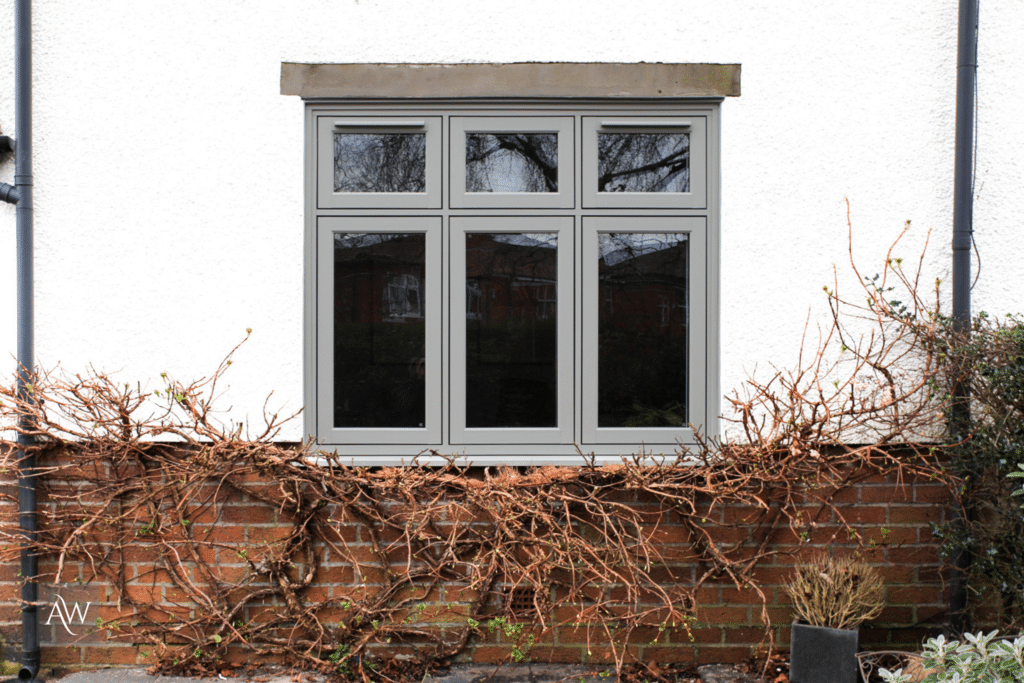
The Residence Collection windows are an excellent option for those who want to combine traditional aesthetics with the benefits of modern technology—offering superior energy efficiency, security, and low-maintenance upkeep.
Aluminium Windows
For those seeking a sleek, modern look without compromising the charm of their 1920s property, aluminium windows may be the answer. With slim frames and the ability to accommodate larger panes of glass, aluminium windows offer a contemporary twist that can work particularly well with flat windows in terraced homes.
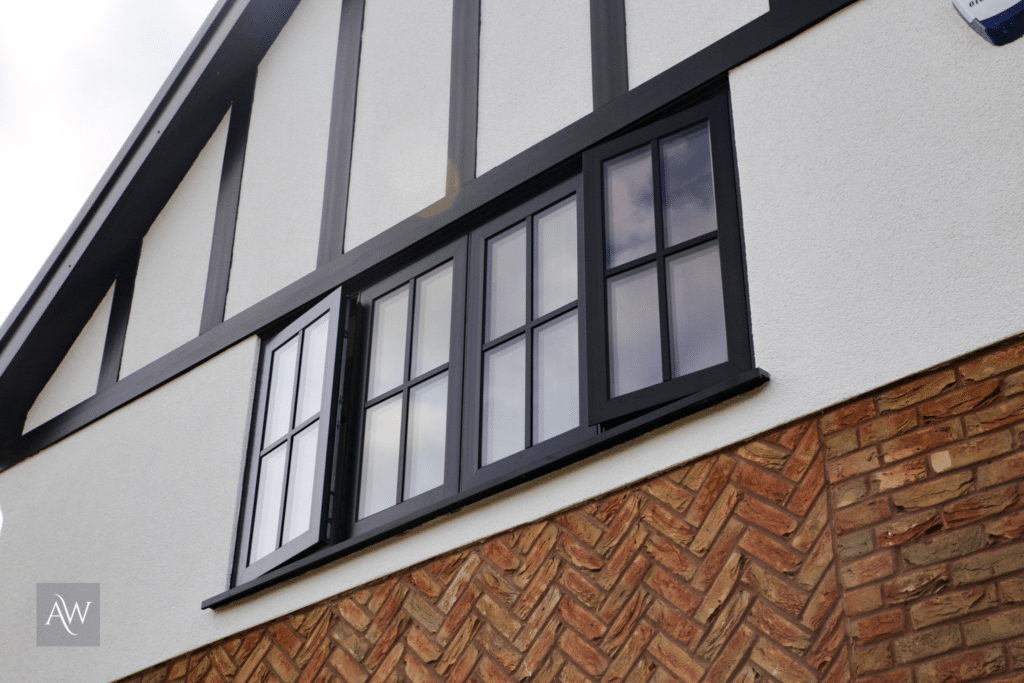
However, while aluminium frames are durable and offer a minimalist look, they may not always fit seamlessly with period-style homes. If maintaining a traditional aesthetic is important to you, flush uPVC windows may be a better option.
Conclusion
When choosing windows for your 1920s property, it’s essential to look for materials and designs that enhance the traditional look while providing modern benefits. If you’re ready to bring your 1920s home into the present day—without losing its past—contact us or visit our showroom and let us help you find the perfect windows that blend the best of both worlds. And after that, all you’ll need to do is sit back and enjoy your beautiful, energy-efficient view!